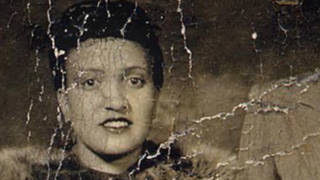
Topics
Guests
- Susan Reverbyprofessor of women’s and gender studies at Wellesley College in Massachusetts. Her article on the Guatemala study will be published in the January edition of Journal of Policy History. Susan Reverby is also an expert on the Tuskegee experiments and author of the book Examining Tuskegee: The Infamous Syphilis Study and its Legacy.
Medical historian Susan Reverby, author of Examining Tuskegee: The Infamous Syphilis Study and its Legacy, discusses the history of medical experimentation at home and abroad. We also play excerpts of the documentary Deadly Deception: The Tuskegee Study. [includes rush transcript]
Transcript
AMY GOODMAN: Professor Reverby, you describe the — you describe three studies as the “trinity” of unholy medical research. Can you describe what these three studies are? You might start talking about the quartet with Guatemala, but go on with these experiments.
SUSAN REVERBY: Right. So, when bioethicists talk about why we have regulations in place now, part of it is, of course, there’s these revelations of these kinds of what we now think of as illegal, but horrific studies, that when you think about it, go back for a second and think about it, with all of the revelations of what the Japanese were doing during the war, and particularly what Mengele was doing, you get the Nuremberg Code right after the war, which says doing this kind of research on people who cannot give informed consent is immoral and a crime against humanity. The problem is that Americans treated those crimes by the Nazis and the lesser-known ones by the Japanese as something done, as the bioethicist Jay Katz so brilliantly put it, as a code for barbarians. So if you think that they were Nazi doctors, you don’t think that you, a good researcher here, could possibly do anything like that.
So the, quote, “holy trinity” — that’s my term, actually — of studies that get looked at in the United States as our horror stories are the providing —- using live cancer cells on patients in a Jewish chronic disease hospital in New York, the feeding of feces of hepatitis—-
AMY GOODMAN: Wait, that one — in that case, in the first case, you’re talking about injecting live cancer cells into patients in this hospital?
SUSAN REVERBY: Into chronic disease patients, right, as a Jewish chronic disease hospital in Brooklyn. So that’s the first case that came to light. Then there was a study at Willowbrook, which was a state-run institution for children with retardation. And in that case, it was — because it was very common for those children to get hepatitis because of the living conditions, there was the feeding of — and then, in some cases, injecting of — live hepatitis cells, often sometimes laced into fecal matter, into these children at Willowbrook. This took place in the early — late '60s and early ’70s. And then there was the revelations of the research in Tuskegee that went on for forty years. So it's those three studies in particular that generate the move toward the setting up of a bioethics commission, called the Belmont Commission, and then the promulgating of regulations that we now live under that mandate institutional review boards, informed consent, protection for the vulnerable.
AMY GOODMAN: Professor Reverby, I want to turn to a 1993 documentary about the Tuskegee experiments called Deadly Deception. This clip addresses how black men were lured into the Tuskegee experiment with assurances that they were actually receiving medical care. Many were told spinal taps were a form of treatment. This clip includes interviews with Tuskegee subject Herman Shaw and medical historian Vanessa Gamble.
NARRATOR: This letter, sent to each man before his spinal tap, claimed it was a very special free treatment.
MACON COUNTY HEALTH DEPT. REPORT: “Some time ago you were given a thorough examination and since that time we hope you have gotten a great deal of treatment for bad blood. You will now be given your last chance to get a second examination. This examination is a very special one and after it is finished you will be given a special treatment if it is believed you are in a condition to stand it.”
HERMAN SHAW: [reading] “This examination is a very special one and after it is finished you will be given a special treatment if it is believed you are in a condition to stand it…REMEMBER THIS IS YOUR LAST CHANCE FOR A SPECIAL FREE TREATMENT.”
VANESSA GAMBLE: The men were told that the spinal taps were a treatment. That shows you some of the deception and deceit involved in the study. And these are physicians saying this, so that it has a certain power and authority of physicians saying this.
NARRATOR: On each subject, they performed physicals and blood tests. And to maintain the appearance of treatment, the doctors gave the men placebos — vitamins, aspirins and tonics — all useless against syphilis.
HERMAN SHAW: There are three different type of medicine: the little round pill, sometimes they gave us a capsule, and then they would give us a little vial of liquid medicine. Everybody got the same thing.
VANESSA GAMBLE: These were men who weren’t going to question the system, who weren’t going to question the government doctors, who weren’t going to be out there picketing and writing and protesting about it. These were men in Macon County, Alabama. Who’s going to speak for them?
AMY GOODMAN: Let’s turn to another clip of Deadly Deception about how the subjects were explicitly denied treatment.
NARRATOR: By 1938, there was a National Venereal Disease Control Act, and throughout the nation, including Alabama, the Public Health Service pushed for syphilis treatment programs. But not for the men of Tuskegee. They were systematically excluded. And if they sought out help, they were tracked down and stopped. This happened to Herman Shaw when he went to Birmingham, Alabama, for treatment.
HERMAN SHAW: When I got there, I saw a lady, a nurse, pacing through the camp. Somewhat she was disturbed, and think that she’d been looking for someone that wasn’t supposed to be there. And they gave me breakfast and put me on the bus and sent me back to town, said, “You didn’t supposed to be here.” Said, “You’re in Macon County clinic.”
UNIDENTIFIED: One of the remarkable aspects of the study was the length to which the Public Health Service went to ensure that the men never received treatment. And when some of the men, by their own design, were able to obtain treatment, this was perceived by the researchers as abrogating the study.
AMY GOODMAN: And I want to turn to another excerpt of Deadly Deception. The Tuskegee subjects were also denied penicillin, even when it became widely used to cure syphilis. Dr. John Heller, who headed the Tuskegee study at the US Public Health Service in the '40s, is seen here touting the benefits of penicillin for syphilis treatment in a public service announcement.
DR. JOHN HELLER: Whatever the future may hold for penicillin therapy, we physicians already have in our hands weapons which, with proper medical usage, should enable us to reduce materially the amount of venereal disease in the United States.
NARRATOR: While promoting penicillin for the nation, Heller continued the policy of denying treatment to the men in Macon County. In 1947, he published the latest findings from the study in The Journal of Venereal Disease Information.
STUDY: The life expectancy of a Negro man between twenty-five and fifty who is infected with syphilis and receives no treatment is reduced by about 20 percent. The fact that nearly twice as large a proportion of the syphilitic individuals as of the control group has died is a very striking one.
NARRATOR: Even with undisputed evidence that men were dying, no penicillin was offered. One of the few surviving Public Health Service doctors who worked on the study still defends that decision: John Cutler.
DR. JOHN CUTLER: It was important that they were supposedly untreated, and it would be undesirable to go ahead and use large amounts of penicillin to treat the disease, because you'd interfere with the study.
JAMES JONES: The fact that the men are denied penicillin simply reaffirms how determined the Public Health Service is to keep this experiment going. I don’t see it as a new issue. Having decided to withhold the treatment of choice in the 1930s, treatment that doctors in the 1930s said was good treatment, I don’t think that there’d be any ethical dilemma for withholding penicillin when it presents itself. They had already crossed that bridge.
NARRATOR: If the ethics of the study had ever been unclear, the events of 1947 should have brought them into sharp focus.
NEWSREEL: Second Nuremberg trials, the American military tribunal hearing evidence against twenty-three of the leading Nazi doctors.
NARRATOR: The Nuremberg tribunals uncovered, amid the perverse horrors of the Nazi regime, gross examples of human experimentation in the name of medical science. The trial of these Nazi doctors led the international community to formulate the Nuremberg Code for the protection of human subjects. Its first and central principle was informed consent: subjects must voluntarily agree to be part of any experiment and must be fully aware of all risks. The scientists of the Tuskegee study, including director John Heller, dismissed the relevance of Nuremberg.
JAMES JONES: I asked him specifically about Nuremberg and whether that gave him any pause. And he said, “Absolutely not.” I asked him if — whether he ever drew any associations between what they were doing and what the Nazis had done, and he said, “Certainly not.” And then he looked at me with a kind of wounded innocence and said, “They were Nazis.”
AMY GOODMAN: Critical point here. That is from Deadly Deception, the PBS WGBH NOVA documentary written, produced and directed by Denise DiAnni. And I want to go back to one of the clips within that, or least the man in that clip, in case you missed it, the head of the Guatemala study, Dr. John Cutler, a member of the medical team that conducted the Tuskegee experiments, interviewed for Deadly Deception, Cutler defending the experiments. Again, he’s the one who went to Guatemala, but defending the Tuskegee experiments as justified.
DR. JOHN CUTLER: The Tuskegee study has been grossly misunderstood and misrepresented this way. And the fact was that it was concern for the black community, trying to set the stage for the best public health approach possible and best therapy, that led to the study being carried out. My regret is — in terms of the study, I have none, as a scientist, and say, one would like to have seen an ideal scientific study, but we’re dealing with human beings over a long period of time, and this is impossible.
AMY GOODMAN: So there he is, Dr. Cutler, one of the doctors involved with both studies, Tuskegee and Guatemala. Dr. Susan Reverby, I want to go back to this point of the Nuremberg trials that you raised and was raised in Deadly Deception. This study in Guatemala was happening at the same time — and same with Tuskegee, which was before and went right through, it went on for forty years into the '70s —-
SUSAN REVERBY: Mm-hmm.
AMY GOODMAN: —- at the same time as the Nuremberg trials.
SUSAN REVERBY: Yes, yes. But, you know, I think the most chilling, actually, in the clip that you just played, is Jim Jones, the historian's retelling of what Rod Heller said to him, which is it’s just — when Heller said to him, “But they were Nazis.” So I think that’s the point I was making earlier, that it’s just too easy to assume that it’s only monsters. What we have to really think about is the culture of medical research itself and why controls are necessary on it. It’s just too easy for physicians like Cutler to fall in love with their data, to see the larger research goals as the most important, and to sort of not see the patient in front of them as a patient, but only merely, frankly, as a subject to be used for a greater good that they think is more important.
AMY GOODMAN: Professor Reverby, we have to break for a minute, and then we’re going to come back to this discussion and talk about Tuskegee, talk about other studies around this country — for example, what happened in Puerto Rico, a part of the United States, but the testing of high estrogen birth control, something that would never be accepted today in the United States, on women there, and the studies of the injection of plutonium in unwitting subjects all over the United States. Our guest is Professor Susan Reverby. She teaches at Wellesley College. Her latest book is called Examining Tuskegee: The Infamous Syphilis Study and its Legacy. Her report on the Guatemala study will appear in the January issue of the Journal of Policy History. This is Democracy Now! We’ll be back with Professor Reverby in a minute.
[break]
AMY GOODMAN: Today we’re speaking for the hour with Professor Susan Reverby. She teaches at Wellesley College. She’s a medical historian. She’s the author of Examining Tuskegee: The Infamous Syphilis Study and its Legacy. And she is the medical historian who has exposed the Guatemala study. Nearly 700 Guatemalans injected with venereal disease by US government doctors.
Susan Reverby, can you briefly tell us about what happened in Puerto Rico, the history of the testing of the birth control pill in this country?
SUSAN REVERBY: I’d be glad to do that, but I want to correct something from the Tuskegee thing for a minute. I really want to go back, because it’s actually in my book, and I think it’s really important. I knew Herman Shaw quite well, and I want to talk about this. One of the things to remember is that the Public Health Service in Tuskegee thought they had a captured population. But it wasn’t a concentration camp. Many of the people left the area. And even though the Public Health Service tried to track them down, many of the men who survived into the antibiotic era got penicillin, including Herman Shaw. So, one of the things that’s really interesting is Mr. Shaw got pneumonia in 1953, and in 1956 he was hospitalized for twenty days, and he was given penicillin for almost all of those twenty days directly. And he died when he was in his nineties. So, even though he was turned away at this rapid treatment center in the '40s in Birmingham, he was treated later, by serendipity. And also, at the treatment center where he was turned away —-
AMY GOODMAN: But because he had -— because he had another problem, right? I mean —-
SUSAN REVERBY: Something else, right. But -— right, so —-
AMY GOODMAN: —- it’s amazing. When he — when Herman Shaw goes elsewhere to try to get treatment for his syphilis and he’s told that he cannot get treatment, he doesn't understand why.
SUSAN REVERBY: Right, but let me explain why he didn’t get treatment there. And this is what makes the history so much more complicated than an easy story. He went to something called a rapid treatment center, which was set up by the government in the postwar — starting in the '30s but in the postwar period, in particular, to provide penicillin. But at the Birmingham center where he went, nobody who was in late latency — that is, no longer contagious — was provided with the penicillin. So we don’t know whether he was turned away in Birmingham because he was in the study and the government had that kind of control, or he was turned away because he was no longer contagious, and therefore, when there was such limited supplies of penicillin, he would not have been given it.
And what’s interesting is, I was — there are two historians, and I was the second, to get into the actual patient records for Tuskegee, that are now available. Anybody can go look at them. They're in the National Archives in Morrow, Georgia. Mr. Shaw —- I mean, other people -— not Mr. Shaw, but other people — went to the place in Birmingham and were treated. So I think one of the things to remember is that we need to tell a very — the important story is the intentionality of the Public Health Service, but we should always remember that this is human beings, and serendipity, ability to get around this kind of stuff, often happens. These men were not pure victims. And there’s always a more complicated part of the story that also needs to be told.
AMY GOODMAN: What was also —-
SUSAN REVERBY: So, I just want to clear that up, because it’s -—
AMY GOODMAN: What was also so astounding, though —-
SUSAN REVERBY: Go ahead.
AMY GOODMAN: —- unlike Guatemala, is that Tuskegee was so well known in the medical community, in the literature, among professionals, and so few people spoke out, but was not well known, though suspected, among hundreds of men, did not understand what was happening to them, that they were going for treatment of a disease that could kill them —-
SUSAN REVERBY: Right.
AMY GOODMAN: —- and yet they were not receiving that treatment.
SUSAN REVERBY: Right, right, right. I mean, one of the things that’s amazing about Tuskegee is there were thirteen published studies of this before the press, you know, got a hold of it in 1972. But remember, if you look at the — if you go through every one of these articles — and my first book, called Tuskegee’s Truths, has some of the excerpts from all — it’s an edited book on documents. And, you know, you look at the articles, and it says “volunteers.” Well, you might — you know, if it says “volunteers,” how is a physician reading this going to know? And one of the things that’s interesting is, starting in the '50s, actually, physicians started to write to the Public Health Service. I document this in the Examining Tuskegee book. Physicians wrote to them and said, “Oh, my god, what are you doing? Look at this.” And the physicians — Cutler not particularly, but a man named Alansky — wrote back and said, “Oh, no. It’s not bad. This isn’t so terrible. You know, we're really helping them,” blah, blah, blah. So, I think we have to really again look at the context of the research and what happens in it. And that’s why I wrote the book, because I think it’s important to think about how much more complicated this can be.
AMY GOODMAN: The testing of —-
SUSAN REVERBY: But now, would you like me to turn to -—
AMY GOODMAN: — Puerto Rican women, yes.
SUSAN REVERBY: Right, sorry. I just needed —- you know, historians like to correct facts. Sorry, it’s what we’re trained to do. One of the things that happened was -—
AMY GOODMAN: Journalists and everyone else like facts, too.
SUSAN REVERBY: What? I know. So, but we love them. We fall in love with them. But we believe in context, too, obviously, and that needs to be explained.
So, what happened in Puerto Rico is that the research, you know, for birth control pills was done — the major work was done here in Massachusetts, actually, but giving out birth control pills was illegal. Contraception was illegal in Massachusetts. So the research was done in Puerto Rico. And the use of very high estrogen dosages was because at that point they really weren’t sure what would be necessary, and they wanted to absolutely make sure that they could stop the pregnancies. So, and there were connections to people. They were working with a physician who had connections in Puerto Rico. So, that’s one of the reasons they went there. There were some objections, clearly, within the Puerto Rican community to this, but women also, frankly, wanted a better way to protect themselves from endless pregnancy. At that point, in Puerto Rico, the Church actually protected sterilization and thought sterilization was acceptable after women had had enough children. But the Church actually objected to the research on the pills, when a number of women — we think a couple of women died because of the high estrogen.
AMY GOODMAN: How high was it?
SUSAN REVERBY: We know that there were a terrible side effects.
AMY GOODMAN: How high was the estrogen?
SUSAN REVERBY: You know, I couldn’t — I actually, frankly, don’t remember the exact details of how high the estrogen. I mean, I’m — you know, I mean, one of the things it is at that point —-
AMY GOODMAN: Like ten to a hundred times?
SUSAN REVERBY: Much higher than what we take now. And in fact, not only the Puerto Rican women, but all of us. I mean, I took the pill as soon as I was -— became sexually active. And only when the pill hearings took place in 1969 and all — at the federal level, and all of the research started to come out about how dangerous they were, did I stop taking it myself. So the research, you know, started in Puerto Rico, but the millions of women, like me, who took it in the late '60s, also were part of a sort of massive experiment to see whether or not this would work.
AMY GOODMAN: I want to turn to Eileen Welsome, who won the Pulitzer Prize for revealing the names and doing the investigation into eighteen people who were injected with plutonium in the ’40s without their knowledge by federal government scientists. In a 2004 interview on Democracy Now!, I asked Eileen Welsome about one of those people. His name was Elmer Allen.
EILEEN WELSOME: The sad part about and the tragic part about Elmer’s story is that nobody believed him. He went to his doctor and told him, you know, “I think I've been injected with something.” His doctor diagnosed him as a paranoid schizophrenic at the same time that he was conversing with the atomic energy scientists in Argonne National Lab to provide them with tissue samples and —
AMY GOODMAN: Wait, wait, wait. His doctor said he was a paranoid schizophrenic at the same time his doctor was providing Elmer’s tissues to the government scientists doing the experiment?
EILEEN WELSOME: That’s correct. That’s what the medical records show. So, Elmer was not only used in 1947 when he was injected with this radioactive isotope, but he continued to be used as a guinea pig for the rest of his life.
AMY GOODMAN: That was Pulitzer Prize-winning journalist Eileen Welsome. She revealed the names of eighteen people in this country injected with plutonium. Elmer Allen was a black conductor on a train in San Francisco. He was injected at the University of San Francisco hospital. This story of the people injected with plutonium, he’d always said — he used the term “I was guinea-pigged by the government.” His wife was a nurse. His daughter was a teacher. We spoke with Elmerine Allen, his daughter. They never understood what he was saying, and they believed what the psychiatrist was saying. Yet the psychiatrist was working with the US government, telling them he was crazy. But he wasn’t. Dr. — Professor Reverby?
SUSAN REVERBY: Oh, I know. I mean, I think one of the things that happens with these kinds of studies — and there were thousands of people involved in these Cold War research on radiation that went on from 1947 up until the — into 1973, '74, that we know about. Thousands upon thousands of people were involved in this. And I think one of the things that’s really hard is when this kind of thing happens, and people start to try to figure out what's going on. They weren’t listened to. And I think — I mean, it’s heartbreaking to listen to this man and his family and the way in which the physician cooperated with the government. I just — it’s so horrifying and [inaudible] it’s really stunning.
AMY GOODMAN: Professor Reverby, I’m racing because we only have a minute, and there have been so many of these experiments, but — and this is an issue that goes to today, as well. But the issue of experimentation on prisoners around this country — a remarkable book called Acres of Skin about experimentation on the skin, the backs of prisoners in the Holmesburg Prison in Pennsylvania. Just amazing. I’m holding this book in front of me. It looks like a checkerboard on their backs.
SUSAN REVERBY: Right, exactly. I mean, remember, prison research — I mean, one of the things that we’ve stopped is prison research, and there’s actually a debate going on now about whether or not it should be done again. But a lot of American research was done in prisons. In fact, there was an inoculation study after Guatemala that was published in 1954 that was done on prisoners in Sing Sing in upstate New York in 1954. So, this was common to use institutionalized people, who saw this, frankly, as a bonus. In fact, one of the things that’s interesting about prison research is it was done mostly on whites, not blacks, because it was considered a privilege. You got like extra money in the canteen or cigarettes if you participated. And we just have to be cognizant of — we need research. No one should be stopping it. All of us are probably alive because of medical progress and medical research. But the controls need to be there, and absolutely people need to know what’s happening, need to be heard when they think something is wrong. And that is the most important lesson of all of this.
AMY GOODMAN: Susan Reverby, I want to thank you very much for being with us, professor at Wellesley College, medical historian, author of Examining Tuskegee: The Infamous Syphilis Study and its Legacy. That’s one of two books she has written on Tuskegee. And we will continue to follow this story and link to all the previous interviews we’ve done at democracynow.org.












Media Options